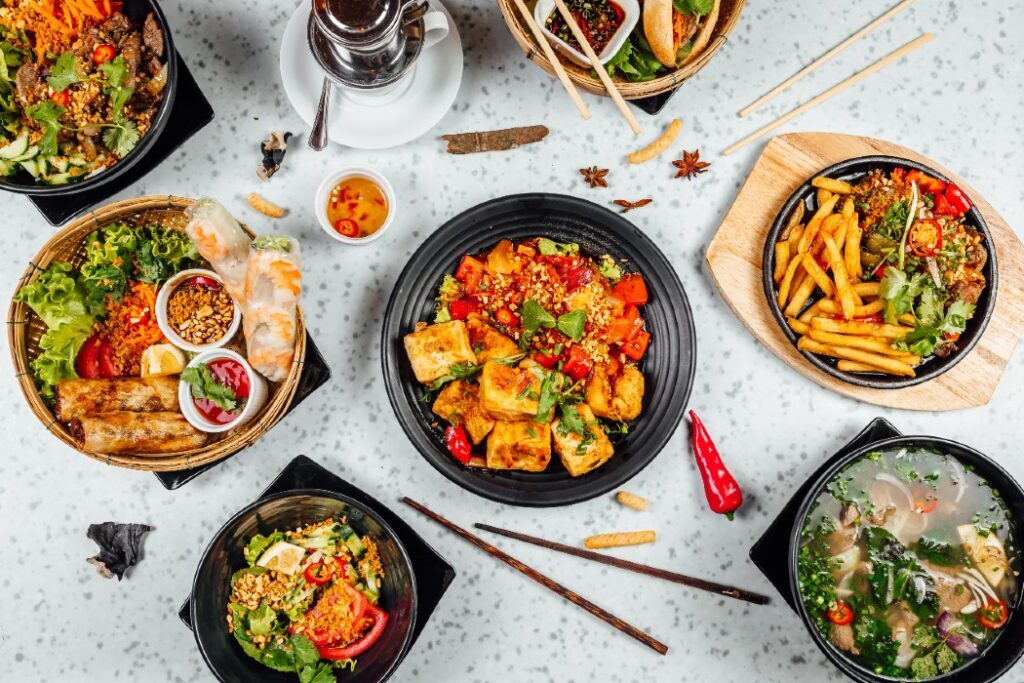Quick service restaurants (QSRs) are under more pressure than ever to deliver speed, consistency, and value—all while managing tight margins and unpredictable supply chains. With high-volume operations, complex sourcing requirements, and growing scrutiny over food safety and sustainability, having a clear view of your supply chain is no longer optional. This is where supply chain mapping comes in.
Supply chain mapping allows QSR operators, supply chain managers, and procurement teams to visualise their entire supplier network—from farm to front-of-house. It helps identify weak links, reduce the risk of stockouts and spoilage, and improve operational coordination across multiple locations. More importantly, it supports compliance, recall readiness, traceability, and ESG goals in a cost-effective way.
Whether you're overseeing ten stores or hundreds, supply chain mapping provides the transparency and insight needed to stay competitive in a fast-moving industry. In this article, we explore how QSRs can use mapping to drive efficiency, safety, and smarter cost control—and offer practical tips to get started.
What is supply chain mapping?
A supply chain map is a detailed visual representation of all the entities and connections that make up your supply chain—from raw material suppliers and manufacturers to transport providers, distributors, and retail or restaurant locations. It shows how goods, data, and processes flow between them.
In the context of QSRs, supply chain mapping helps teams track:
- Ingredient sources (farms, fisheries, factories)
- Processing and packaging facilities
- Distribution centres and logistics routes
- Local and national suppliers
- Compliance checkpoints and ESG indicators
There are two primary types of mapping:
- Static mapping, which offers a snapshot view of the supply chain at a single point in time.
- Dynamic mapping, often powered by software, which uses real-time data to reflect changing conditions, delivery statuses, risk alerts, and inventory updates.
For QSRs, dynamic, software-driven supply chain mapping provides the speed and insight needed to manage high-volume operations and anticipate challenges before they impact service.
The role of supply chain mapping in QSR supply chain management
QSR supply chains are complex, often involving dozens of suppliers and rapid delivery schedules. Mapping provides a single source of truth that helps manage the following challenges:
Multi-Site Consistency
With multiple outlets, consistency is critical. Mapping ensures each site receives standardised products from approved suppliers—reducing menu variation and operational risk.
Sourcing Compliance
It enables teams to track whether suppliers meet sustainability, allergen, or ethical sourcing standards, essential for today’s conscious consumers and corporate social responsibility targets.
Reducing Delivery Delays and Stockouts
Supply chain maps highlight transport bottlenecks or dependencies on single-source suppliers. With this visibility, QSRs can identify and resolve issues before they cause shortages.
Food Safety and Recall Management
Mapping allows QSRs to trace ingredients back to their origin quickly. In the case of a contamination issue, mapped data can support targeted recalls and faster compliance reporting.
Supporting Inventory and Ingredient Traceability
Supply chain mapping integrates closely with restaurant inventory management systems to ensure the right quantities are available when and where they’re needed, with full traceability.
By embedding mapping into broader QSR supply chain management, restaurant brands can reduce risk and increase resilience.
How mapping improves restaurant inventory management
Effective restaurant inventory management relies on real-time visibility of the supply chain. When mapping is in place, QSRs benefit in multiple ways:
- Accurate forecasting: Mapping helps identify trends across regions and locations, improving stock predictions and avoiding over-ordering.
- Supplier reliability tracking: Operators can compare supplier performance across branches, ensuring consistent fulfilment and removing underperforming vendors.
- Optimised ordering and distribution: Mapping highlights where to consolidate orders or adjust delivery routes for cost efficiency.
- Waste reduction: By understanding the full lifecycle of perishable ingredients, restaurants can make informed purchasing decisions to reduce spoilage.
Supply chain maps support just-in-time inventory strategies while reducing the risk of shortages or excess waste—key concerns in QSR operations.
Technology and supply chain mapping software for QSRs
Modern supply chain mapping software goes beyond static diagrams. These platforms are designed to capture real-time, actionable insights that help QSR operators make smarter decisions.
Key features to look for:
- Live data feeds from suppliers and logistics partners
- Geographic visualisation of sourcing and distribution points
- Risk alerts for delays, compliance breaches, or recalls
- Sustainability tracking for emissions, ethical sourcing, and ESG goals
- Mobile access for on-the-go decision-making
When choosing a solution, consider:
- Integration with existing QSR ERP systems or procurement platforms
- Cost and scalability—start small with high-impact categories
- User-friendly dashboards for franchise managers and operations staff
Platforms like Foods Connected, Crisp, or Sourcemap provide tailored features for food service businesses, offering advanced visibility, automated alerts, and real-time reporting.
Benefits of food supply chain mapping for safety and cost control
For QSRs, supply chain mapping is a powerful risk management ally in the pursuit of both food safety and cost control.
Ingredient and Batch Traceability
Mapping tracks where each product came from, which lot or batch it belongs to, and who handled it. This makes it easier to isolate food safety issues and protect customer health without overrecalling.
Supplier Performance Insights
Consistently underperforming suppliers drive up operational costs. Mapping tools let you benchmark delivery times, fulfilment accuracy, and quality to inform better vendor selection.
Spoilage and Waste Reduction
By tracking shelf life and delivery lead times visually, QSRs can cut down on inventory waste—protecting profit margins and sustainability goals.
Regulatory Compliance
Digital maps simplify documentation and reporting for audits, allergen declarations, and ESG disclosures—freeing up valuable time for busy compliance teams.
With pressure on pricing and increasing scrutiny on safety, supply chain mapping empowers QSRs to stay efficient and compliant.
How to get started with restaurant supply chain mapping
Launching a supply chain mapping initiative may seem complex, but it’s manageable with a phased approach:
Step 1: Identify all suppliers and partners
Create a list of all suppliers, transporters, processing facilities, and storage hubs, along with key contact details and compliance statuses.
Step 2: Choose mapping software
Start with a tool that fits your scale and budget. Ensure it integrates with your current inventory or procurement platforms.
Step 3: Build the map
Visually plot your supply chain from raw ingredient source to store or restaurant location. Include transport routes, cross-docking points, and relevant compliance data.
Step 4: Define KPIs and risk areas
Set performance benchmarks for suppliers and logistics providers. Highlight areas vulnerable to delays, quality issues, or geopolitical risks.
Step 5: Review and refine regularly
Update the map as your supplier network evolves. Share insights across procurement, operations, and compliance to drive continuous improvement.
Collaboration is key—ensure cross-departmental input and buy-in from franchisees where applicable.
Future-proofing QSR operations with supply chain mapping
As the QSR landscape becomes more competitive, resilient supply chain operations will separate the leaders from the rest. Supply chain mapping gives operators the tools they need to stay agile, safe, and profitable.
By implementing visual supply chain mapping and integrating it with inventory and procurement tools, QSRs gain clarity across their entire value chain—enabling faster decisions, better supplier choices, and stronger compliance.
Whether you're managing one site or one hundred, investing in supply chain mapping today ensures you’re ready for tomorrow.
Ready to optimise your QSR supply chain? Explore digital supply chain mapping tools, consult with one of our specialists directly, or book a demo to take the first step towards smarter, safer, and more efficient operations.

Caitlin Arthurs
Caitlin Arthurs is a Marketing Executive at Foods Connected, specialising in content creation, SEO, and digital strategy. She works closely with industry experts to produce insightful articles, case studies, and resources that help food businesses optimise their operations and stay ahead of regulatory changes. When she’s not crafting content, Caitlin enjoys graphic design, travelling, and spending time with her golden retriever, Spencer.
Stay up to date
Stay up to date
Browse Posts
- November 2025
- October 2025
- September 2025
- August 2025
- July 2025
- June 2025
- May 2025
- April 2025
- March 2025
- February 2025
- January 2025
- December 2024
- November 2024
- October 2024
- September 2024
- August 2024
- July 2024
- June 2024
- May 2024
- April 2024
- March 2024
- February 2024
- January 2024
- December 2023
- November 2023
- October 2023
- September 2023
- August 2023
- July 2023
- June 2023
- May 2023
- April 2023
- March 2023
- December 2022
- November 2022
- October 2022
- September 2022
- August 2022
- July 2022
- June 2022
- May 2022
- April 2022
- March 2022
- February 2022
- January 2022
- December 2021
- November 2021
- October 2021
- August 2021
- July 2021
- June 2021
/Blog%20Headers/shutterstock_2480556949.jpg)

/Blog%20Headers/shutterstock_1927957907%20(1).jpg)
/Blog%20Headers/shutterstock_1845178195%20(2).jpg)
/Blog%20Headers/shutterstock_2473376713.jpg)
/Blog%20Headers/shutterstock_2133827717%20(1).jpg)
/Blog%20Headers/shutterstock_2247276303.jpg)


.png)
.png)

.jpg)
/Blog%20Headers/Blog%20header_How%20AI%20is%20making%20supply%20chains%20more%20efficient.jpg)
/Blog%20Headers/Blog%20header_SEO_How%20AI%20detects%20food%20fraud.jpg)

/Industry%20Voices/Industry%20Voices%20live/Ruth%20Brown%20-%20M+S/Industry%20voices_Ruth%20Brown%20Blog%20Header.png)
/Blog%20Headers/Supply%20chain%20resilience%20Blog%20Header%20.jpg)
/Blog%20Headers/Blog%20header_the%20role%20of%20real%20time%20data.jpg)
/Blog%20Headers/FSMA%202024%20update%20Blog%20header.jpg)